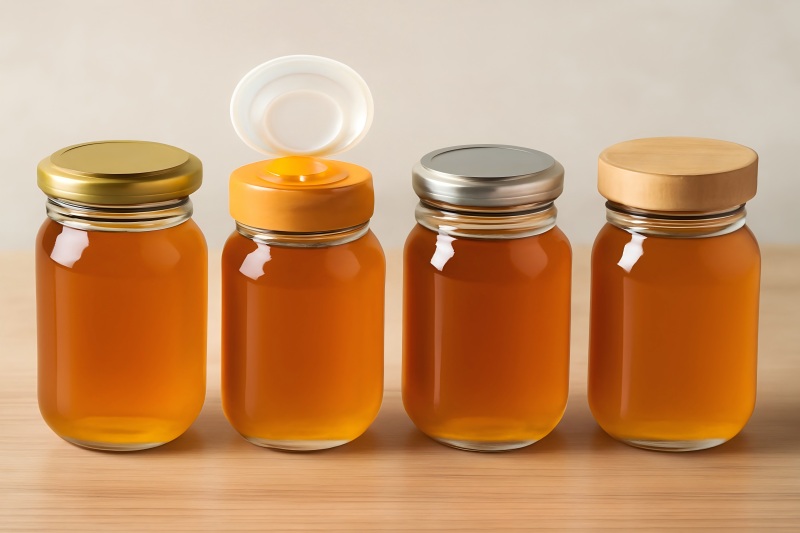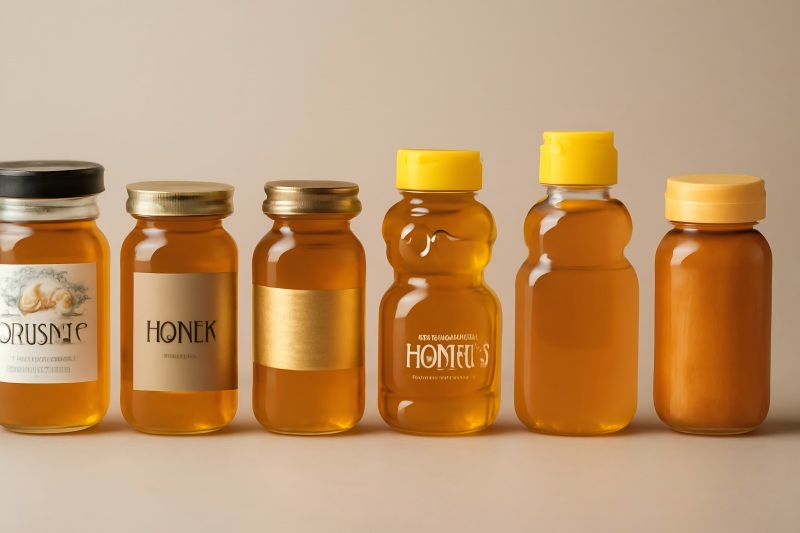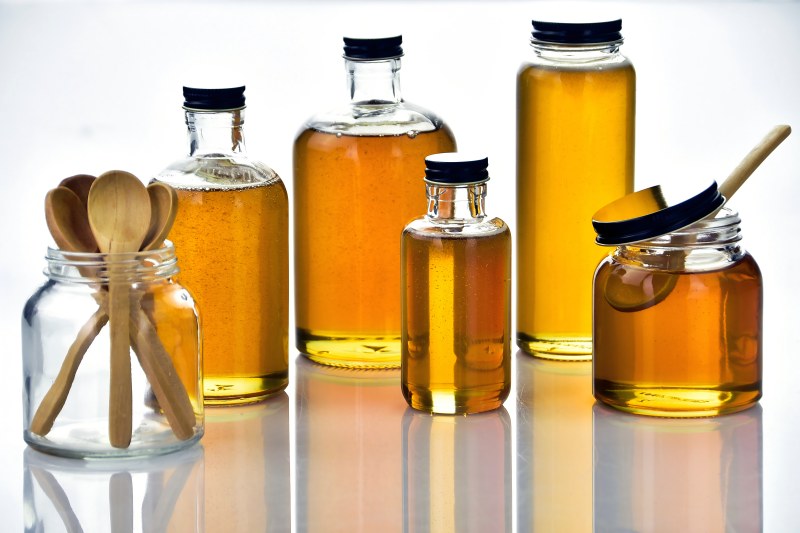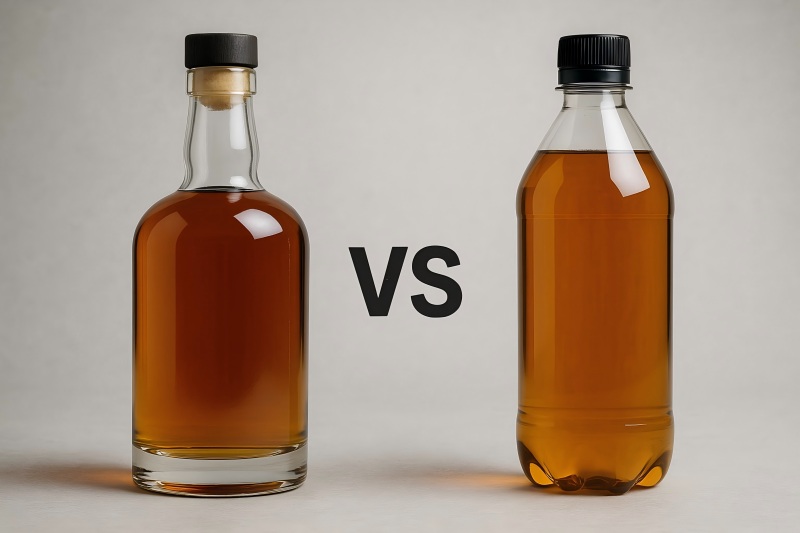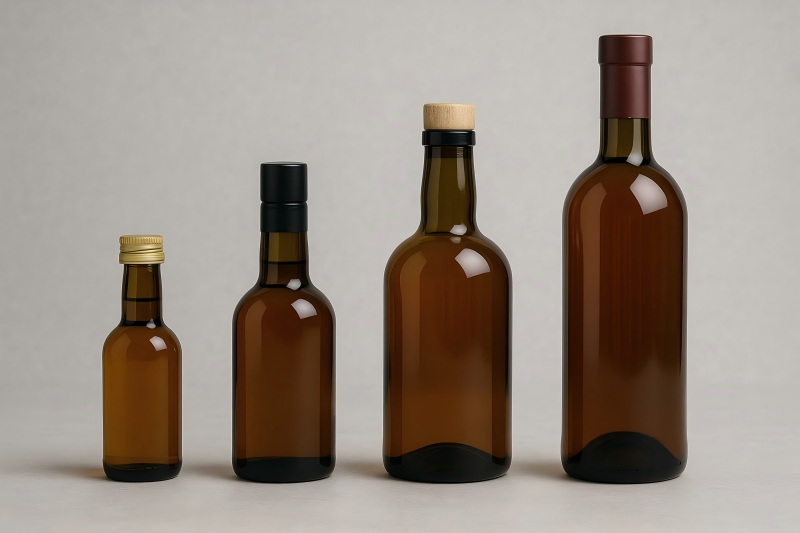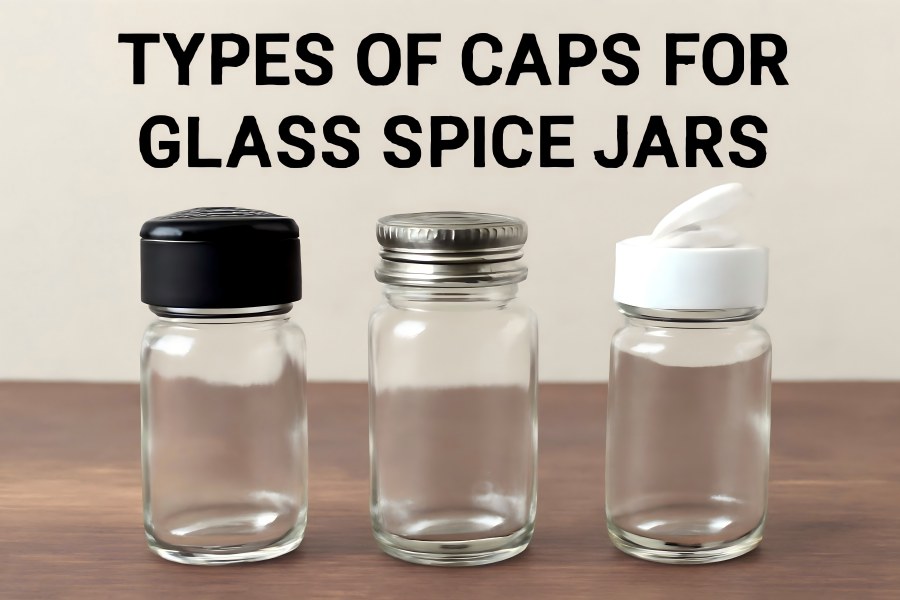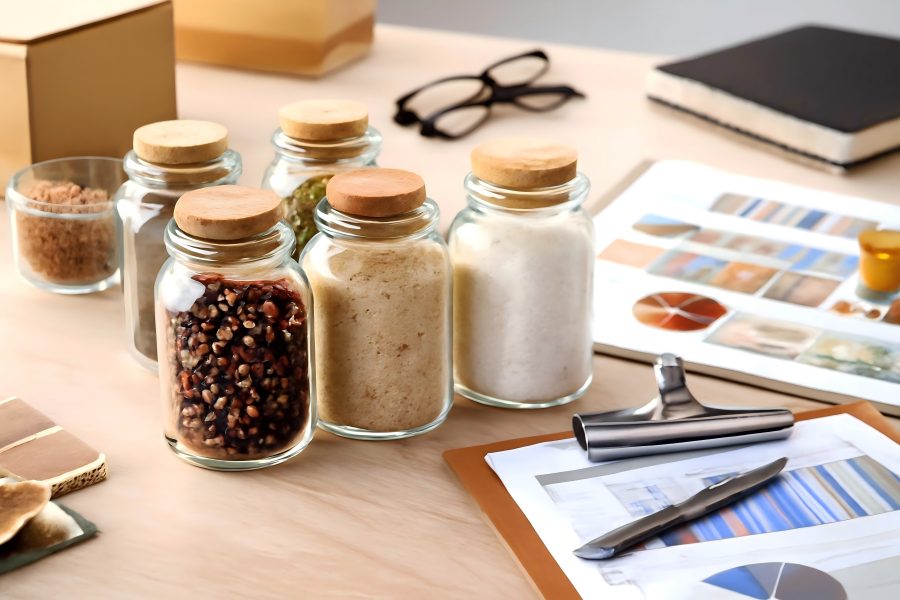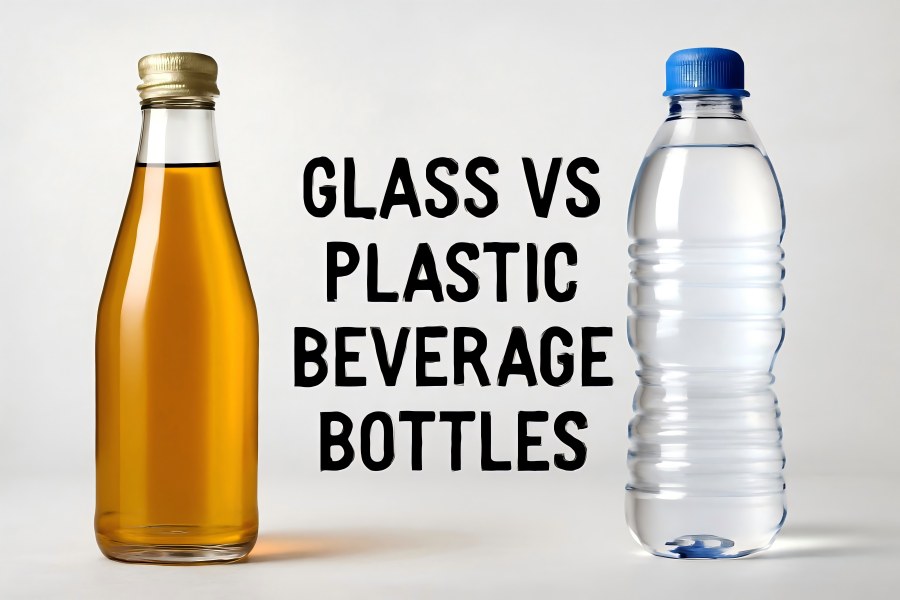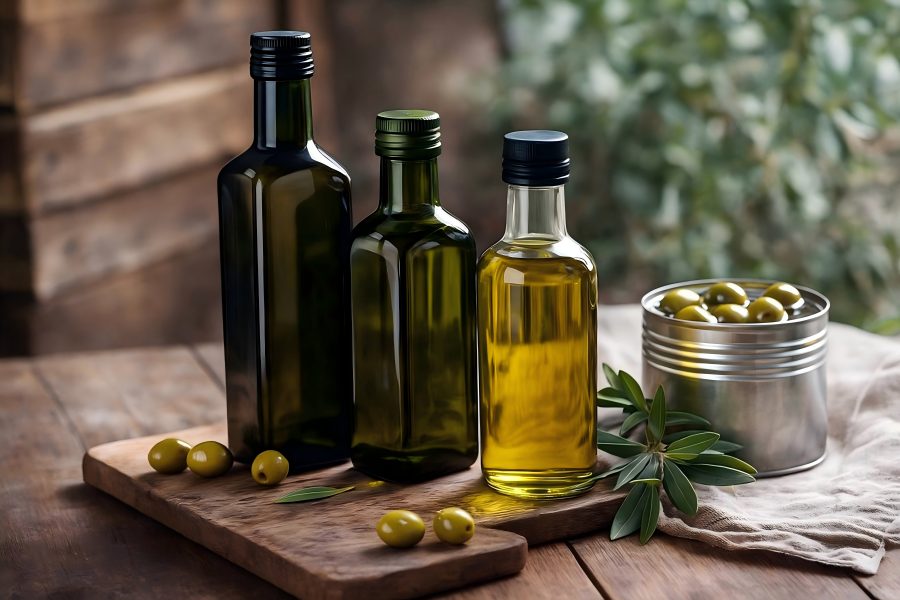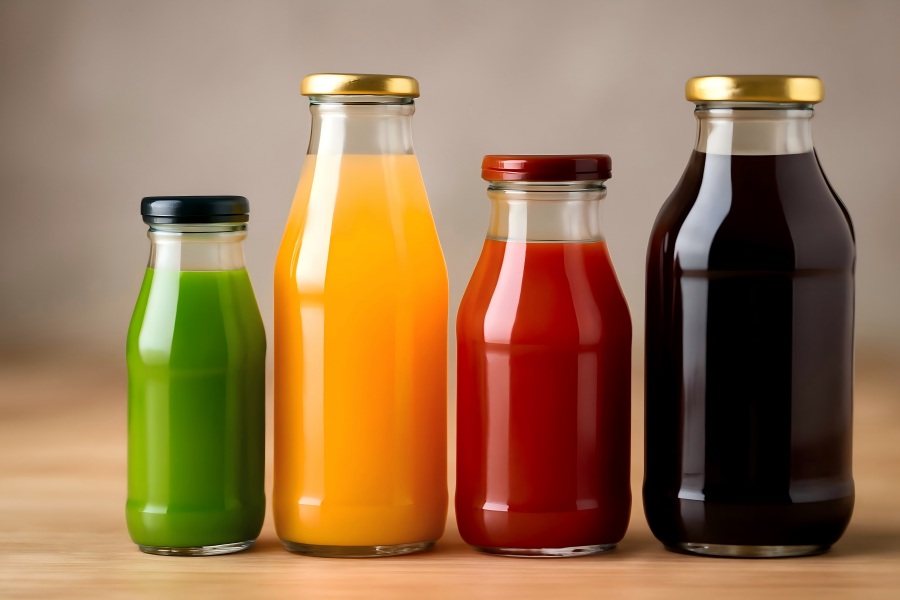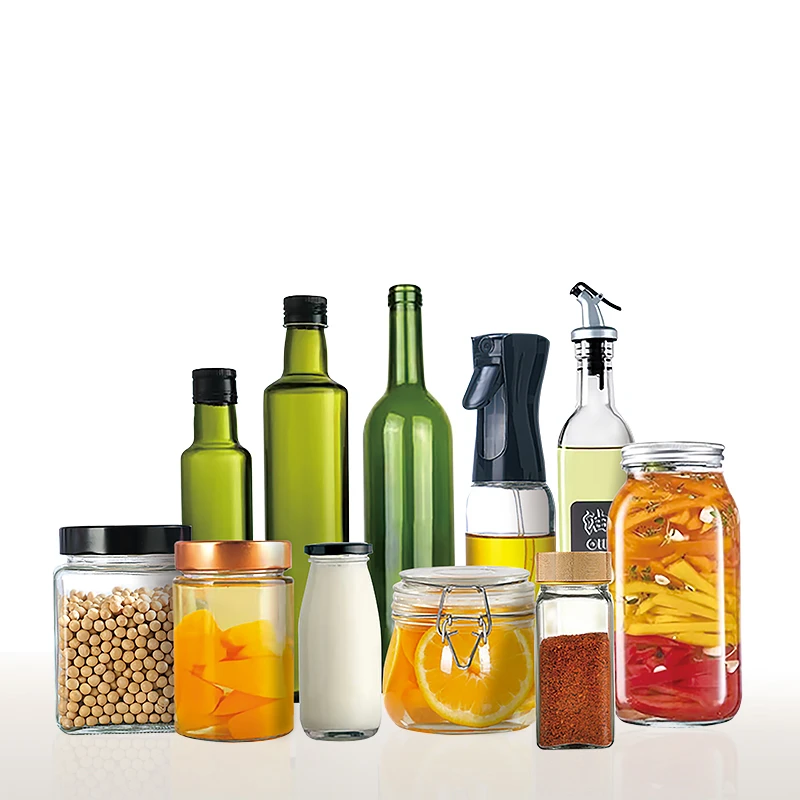How to Package and Ship Wholesale Glass Spice Jars Safely?
Planning & Preparation
Before you even touch bubble wrap, you should think through the logistics. Careful planning helps reduce damage, waste, and returns.
Assess the product characteristics
Ask yourself:
- What are the height and diameter dimensions?
- What is the weight (empty and filled) of each jar?
- Does the jar have threads, lids, corks, stoppers that might pop open?
- Are the jars shipped empty or filled with spices (bulk, fine spices, powders, granules)? If filled, leakage or abrasion of internal contents is a concern.
- Are the jars uniform in shape, or do some have protrusions, ridges, or unique shapes?
- What is the anticipated shipping distance/transit time, and how rough is the route likely to be (local courier, cross-country, international)?
- What are your volume/throughput constraints (i.e. are you packing tens, hundreds, thousands per day)?
Understanding these helps you choose packaging tolerances, padding thickness, and packaging methods (e.g. custom inserts vs ad hoc wrap).
Design your packaging strategy
Some high-level decisions to make:
Single vs multiple layers of packaging (e.g. jar → inner box → outer box).
Whether to use custom inserts (foam, molded pulp, corrugated partitions) vs generic cushioning materials (bubble wrap, foam sheets, air pillows).
- Buffer zones: how much additional clearance you need between glass surfaces and box walls.
- Box strength: How strong should the box be: single, double, or triple? This depends on load, stacking, and handling.
- Labeling/orientation instructions: “Fragile,” “This Side Up,” etc.
- Insurance/liability: whether you’ll purchase shipping insurance or require signatures for fragile items.
- Quality control checks and drop testing: even a well-designed packaging system should be tested in your environment (e.g., drop tests, vibration tests).
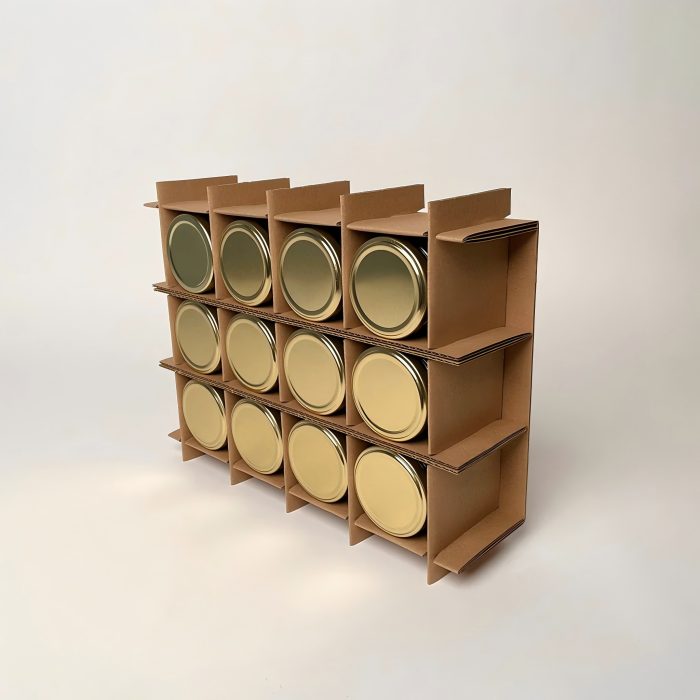
Materials You’ll Need
Here is a non-exhaustive list of materials and equipment that good operations use when shipping fragile glass jars. Use quality, not just the cheapest.
| Material / Item | Purpose / Use | Notes |
| Bubble wrap (various bubble sizes) | Primary cushioning wrap | Larger bubbles absorb more shock; smaller bubbles wrap tighter around curves. |
| Foam sheets/foam wrap | Alternate or supplement wrapping | Good for flat surfaces or as buffer layers. |
| Corrugated cardboard sheets / stiff dividers | Inserts, partitioning, reinforcing sides | You can build compartments to isolate jars. |
| Molded pulp or molded foam trays/custom inserts | Precise protection for each jar | More expensive but excellent for high volume. |
| Air pillows / inflated cushions | Fill voids/buffer empty space | Use where you can’t stuff with wrap. |
| Kraft paper / crumpled paper | Gear for light filling, to prevent shifting | But you should avoid using only newspaper (insufficient shock absorption). |
| Ziploc or poly bags / plastic sleeves | For secondary containment, spill prevention | Seal each jar, especially if filled. |
| Tape (packing tape, water-activated kraft tape, filament tape) | Seal boxes securely | Use tape rated for shipping. |
| Transparent tape or tamper-evident tape | Seal jar lids or closures | To prevent loosening in transit. |
| Sturdy corrugated boxes (inner & outer) | Physical shell protection | Use boxes rated for the load; consider double-wall for heavy shipments. |
| “Fragile” / “Handle with Care” stickers, orientation arrows | Visual cues to handlers | Not foolproof, but helpful. |
| Shrink wrap or stretch wrap | Bundle small clusters or secure door edges | Helps reduce movement. |
| Cushioning corner protectors | Reinforce edges/corners of packaging | Corners often absorb shock in drops. |
| Label printing/shipping label equipment | Accurate addressing and tracking | Reduces mis routing risk. |
| Scales, calipers, tape measure | For QC and consistency | Ensures packaging fits design tolerances. |
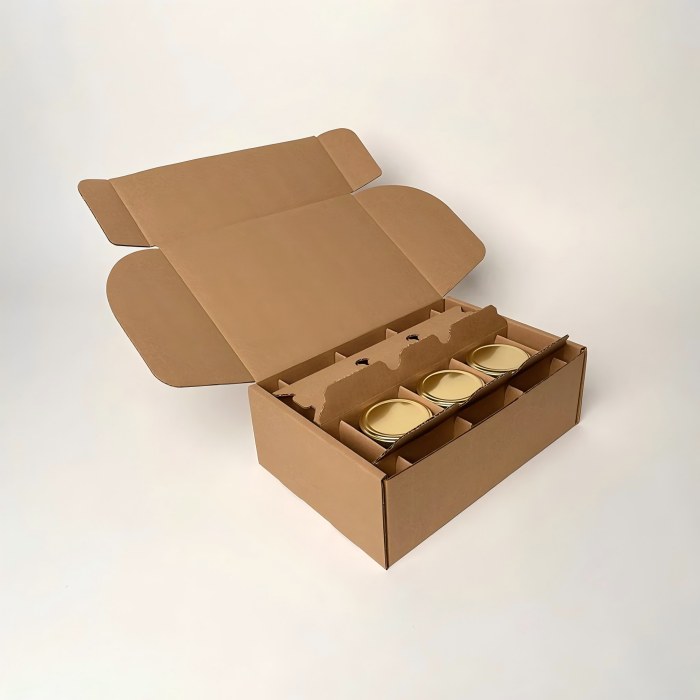
Step-by-Step Packaging Procedure
Below is a structured workflow for packaging your glass spice jars. Adapt this to your volume and resources.
Inspect and prepare the jars
- Quality inspection: Check each jar for cracks, chips, or structural defects before packing.
- Clean and dry: Any debris, moisture, or residue can weaken the packaging or cause damage.
- Secure the closure: Screw on the lid tightly. If the jar is filled, you might apply tamper-evident tape or shrink wrap around the lid to keep it from loosening.
- Sealing secondary (if filled): Slip the jar into a sealed plastic or poly bag (e.g., Ziploc) to prevent leakage if the glass breaks. This is a common safeguard.
- Label internally (optional): If your jars have batch codes, lot numbers, or internal identifiers, affix labels before wrapping (so they don’t get removed in the cushioning).
Primary wrapping (individual jar protection)
- Each jar should be wrapped individually in a multi-layer protective shell.
Layer of cushioning material
- Begin with a soft layer (e.g. thin foam sheet or kraft paper) to eliminate sharp points or edges.
Bubble wrap/foam wrap
- Wrap the jar fully in bubble wrap, extending well past the top and bottom edges (e.g. at least 2–4 inches beyond each end).
- Use multiple wraps to ensure thickness; for heavier jars, use larger bubble wrap plus an extra layer. (Some packers use 2 sq ft of bubble wrap per jar as a baseline.
Secure with tape
- Use tape to hold the layers in place. Avoid taping directly to the glass; tape the wrap layers.
- For lids/necks, ensure tape doesn’t interfere with opening.
Check the “feel”
- Gently squeeze or press to verify that the glass does not press against the edges.
Optional: double-box small unit
- For extremely fragile or premium jars, pack the wrapped jar inside a small box (inner box) before inserting it into a larger outer box. This “box-in-box” technique adds buffer zones.
Assembling into an inner container (grouping)
- If you are shipping multiple jars together, you need to design the inner container carefully.
Use partitioned inserts
- Corrugated dividers or molded pulp partitions prevent jars from colliding.
Arrange for stability
- Heavier jars or larger units go at the bottom.
- All jars should rest upright (if possible) to distribute forces evenly.
Fill gaps
- Use foam pieces, air pillows, or bubble wrap to fill residual spaces.
- The rule: the contents should not move when the box is gently shaken.
Top cushioning
- Leave a cushion layer (e.g. 2–3 inches) above jars before closing the inner container.
Seal the inner container
- Tape all seams securely, reinforce corners and edges.
- Optionally apply “Fragile” label or orientation indicator.
Outer container (shipping box)
Select outer box
- Use a box that is appropriately sized: large enough to incorporate cushioning, but not so large that jars can shift.
- For heavier shipments, choose double-wall or extra-strong corrugated boxes.
Bottom padding
- Lay a cushioning layer (e.g. ~2–3 inches of bubble wrap, foam, crumpled paper) at the bottom.
Place the inner container
- Center it, leaving room (~2–3 inches) on all sides for cushioning.
Fill side gaps
- Use air pillows, foam, or bubble wrap to fill the remaining voids. Ensure the inner package is firmly immobilized.
Top padding
- Add a final cushion layer above the inner container.
Seal outer box
- Seal all seams using “H” taping—center and both box edge flaps. Reinforce corners and vulnerable seams.
Labeling
- Place the shipping label on the top of box.
- Add “Fragile,” “This Side Up,” arrow indicators, or “Glass – Handle with Care” stickers on all sides.
- If orientation matters (e.g. filled jars), mark “DO NOT TURN UPSIDE DOWN.”
Optional outer wrapping
- For extra weather protection, wrap the sealed box in shrink film or a plastic bag before final taping.
Carrier handoff and shipping documentation
- Choose a carrier service with good handling reputation (fragile item service, with tracking and insurance).
- At drop-off or pickup, you may ask for a “fragile stamp” or to mark the package as sensitive.
- Retain tracking numbers, and if possible, photograph the packed and sealed box for proof in case of damage claims.
- For international shipments, check customs declarations and ensure that glass items or spices are not prohibited or taxed unusually.
Shipping Considerations & Best Practices
Even the best packaging can fail if shipping considerations aren’t accounted for. Here are important practices:
Tolerances and buffer zones
- Maintain at least 2 inches (5 cm) of cushioning on all sides between the glass surface and the outer box wall (often more, depending on drop height and risk).
- For heavier shipments, you may need thicker cushioning or stronger buffer zones.
Box strength and stacking
- Ensure the box can resist compression and crushing (especially in warehouse stacking). Use boxes rated for the expected compression load.
- Avoid over-stacking; label “Do Not Stack” if necessary.
- Reinforce corners and edges, which tend to fail first.
Shock, vibration, and drop protection
- Shipments go through conveyor belts, drops, vibrations, and jostling. Cushioning must absorb shocks so they don’t reach the glass.
- Many packaging standards use drop tests (e.g. dropping from 4–6 feet) to validate packaging.
- Use of multiple layers of cushioning (bubble + foam + void fillers) is key.
Temperature and humidity
- Rapid thermal changes (hot to cold) can induce thermal shock in glass. Be cautious in extreme climates.
- If the jars are filled with spices, moisture can degrade contents or affect packaging adhesives.
Moisture and environmental protection
- Use moisture-resistant outer liners or plastic wrapping to protect the box from rain or humidity.
- Use water-activated (kraft) tape, which adheres strongly and resists peeling.
Handling instructions and labeling
- Label each side of the box with “Fragile — Glass” and “This Side Up.”
- Use arrow indicators to show correct orientation.
- Consider adding “Do Not Tilt,” “Do Not Roll,” etc., if applicable.
Insurance, tracking, and claims
- For valuable shipments, purchase shipping insurance covering breakage.
- Ensure the carrier offers detailed tracking (scan updates at each step).
- Document the package pre-shipment (photos, weight, dimensions) to support claims.
Route and transit time
- Shorter transit times reduce exposure to rough handling.
- Avoid peak periods (like holidays) when carriers are overloaded and mishandling is more likely.
- Use “fragile priority” or expedited services if budget allows.
Common Pitfalls & How to Avoid Them
Understanding common mistakes helps you strengthen your process.
Insufficient cushioning
- Too little bubble wrap, or using only newspapers → inadequate shock absorption.
- Solution: standardize minimum cushion thickness and test via drop trials.
Loose packaging/shifting jars
- Jira moves and collides internally.
- Solution: tightly fill voids; don’t allow movement when gently shaken.
Overstuffing/compression damage
- Too much pressure from packing or stacking can stress glass.
- Solution: leave a slight “give” in padding layers; avoid extreme compression.
Poor box strength
- Thin or reused boxes that can collapse.
- Solution: always use boxes rated for the weight and stacking environment.
Inadequate lid sealing/leakage
- Lid unscrews or opens during transit.
- Solution: tape or shrink-wrap lids; use inner poly bags for containment.
Ignoring orientation handling
- Boxes turned upside down or sideways.
- Solution: clear “This Side Up” labels; avoid designs dependent on orientation.
Not testing packaging
- Packaging works only in ideal scenarios.
- Solution: periodically run drop, vibration, and stacking tests.
Mixing glass with heavy items
- Heavy items press on glass, causing breakage.
- Solution: Ship glass only with other glass or light-weight fillers.
Quality Control & Package Testing
To maintain consistency and reduce returns, build QC into your workflow.
Drop tests
- Use a fixed height (e.g. 4 ft, 5 ft) drop test in multiple orientations (face, edge, corner).
- If any glass breaks, revise cushioning or buffer design.
- Perform this on random sample packages periodically.
Vibration and compression testing
- Simulate vibration or tilting to see if jars shift.
- Place weight or additional stacking loads on boxes to test strength.
Transit sample monitoring
- Insert a shock log/data logger in a few shipments to record actual shock events. This gives real-world data on worst-case stress.
- Track returns and damage rates per batch, to identify weak points.
Pre-shipment inspection
- Check each packaged box for signs of deformation or weakness.
- Weigh and measure to ensure consistency with design tolerances.
Feedback loop
- Record damage reports (when customers receive broken jars).
- Analyze the failure modes (break location, which jar, how it was packed) and adjust designs accordingly.
Example Walkthrough: Shipping 12 Glass Spice Jars
Let’s run through a sample scenario so you can visualize the process.
Scenario
You have 12 identical 4-oz glass spice jars (approx. 3″ diameter × 4″ height) to ship from your warehouse to a customer 1,200 miles away.
Step-by-step
- Inspect jars → ensure no blemishes or microcracks.
- Seal lids securely + optional tamper-evident tape.
- Insert each into a 1-mil poly bag and seal (for spill protection).
Primary wrap:
- Start with a thin foam sheet around the jar.
- Wrap with ~3 full layers of bubble wrap (large bubble) so that ends extend 1.5–2″ beyond top and bottom.
- Tape wrap securely (not on jar directly).
Place into partitioned inner box:
- Use a corrugated divider to make 3 × 4 grid layout.
- Insert wrapped jars upright in each cell.
- Fill side gaps with foam strips or air pillows.
- Place ~2″ cushion above jars.
- Seal inner box, label as fragile.
Outer box:
- Use a double-wall corrugated box sized to allow ~2–3″ cushion on all sides around inner box.
- Bottom cushion ~2″ of bubble wrap or foam.
- Place inner box in center.
- Fill side and top voids with air pillows or foam sheets.
- Seal with “H” taping method.
- Label all sides: shipping address, “Fragile – Glass,” orientation arrows.
Carrier handoff
- Choose a carrier with good handling and tracking.
- Photograph the final packaged box for documentation.
- Request “fragile” handling if possible.
- Retain tracking and insurance.
Perform a drop test with a mock box before deploying. If breakage occurs, increment cushion thickness or reinforce the buffer.

